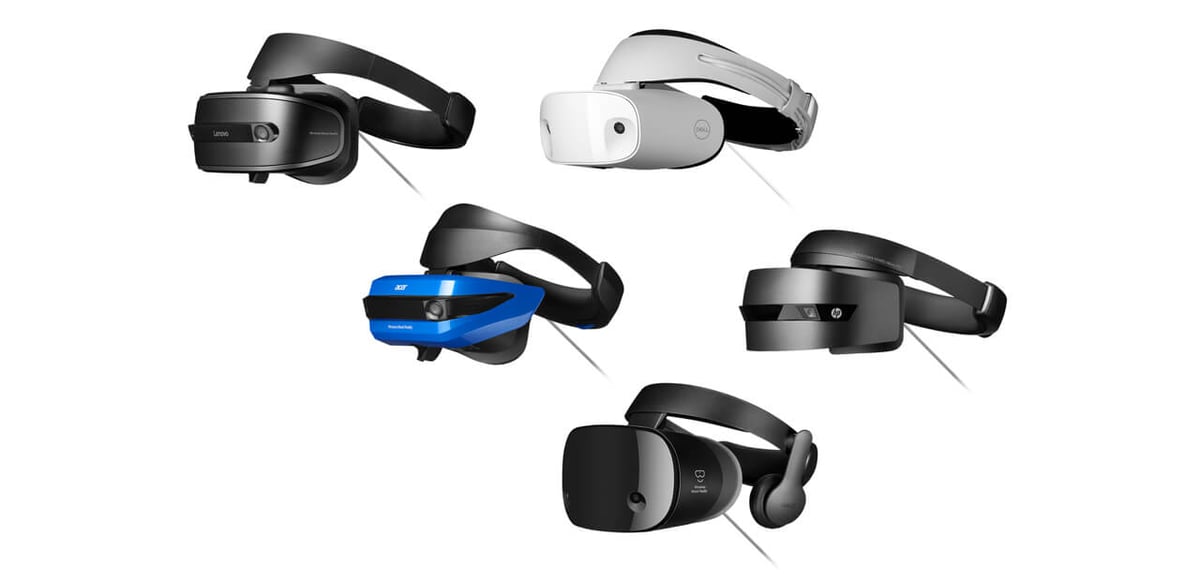In tandem with its Fall Creators update for Windows 10, Microsoft has launched its new 3D visualization platform: Mixed Reality
If you have a computer or laptop running Windows 10, chances are that you’ve encountered one of Microsoft’s many incremental steps to prepare for its next big update. Things like the Mixed Reality Viewer surreptitiously sidling onto your programs list, or even the bigger deal that was Paint 3D supplanting (or not) the traditional Paint program. Scene setting in anticipation of the launch of Mixed Reality, if you ask us.
And now, the time has come. The hammer has dropped, and the update is available for all. And with it comes Mixed Reality.
Microsoft’s interpretation to delivering both augmented reality and virtual reality (AR and VR), Mixed Reality signals the company’s vision of a blurring of the lines between the two.
For users of Windows 10, Mixed Reality manifests itself most vividly as the Cliff House. A fully rendered 3D house in which you can explore, pin programs to launch within the virtual space and operate a virtual desktop of the machine you’re running Mixed Reality on.
But. And it’s a medium sized but. The Cliff House is only experienced through the lenses of a VR headset. Specifically, one of the many third party headsets Microsoft has helped develop for Mixed Reality. We’ll cover these in more detail after the jump.
A VR headset isn’t necessary to experience Mixed Reality content though. For apps that utilize AR (such as the aforementioned Mixed Reality Viewer), your computer can overlay objects imported from the likes of Paint 3D on the feed from your webcam or camera.

Hardware, Hardware, Hardware…
It’s clear Microsoft sees VR and AR as an important part of Windows future. And for these tentative first steps the company is meeting us half-way with a handful of not-cheap, but not really expensive VR headsets.
Previous VR headsets for PCs have primarily been for a gaming audience. Luxury items with a price to match; for the hardcore few. With their own semi-walled gardens of content and support, they have remained a luxury item.
Instead of relying on these existing sets and their proprietary setups, Microsoft has instead partnered with a roster of third party OEMs — HP, Dell, Samsung, Lenovo and Acer — to produce VR headsets that share a baseline set of standards for Mixed Reality.
Most of of these Mixed Reality headsets share similar hardware specifications — dual 1440×1440 LCD displays running at a native 90Hz refresh rate and a 105 degree field of view plus a 3.5mm headphone jack. Despite their near identical specs, the price point fluctuates between $399 and $449.
The one headset to differentiate itself from the launch pack is Samsung’s Odyssey. The Korean company’s headset will stand apart with AMOLED screen tech, a wider 110 degree FoV and integrated headphones when it lands in November. These small changes price this headset above the others at $499.
https://www.youtube.com/watch?v=h5g0IxhxBoY
What’s Different About Mixed Reality?
Setting this group of googles apart from the rest of the pack is inside-out tracking. This means that Mixed Reality headsets eliminate the need for external positional tracking stations required by other VR headsets.
This is a boon for uncomplicated setup and ease of use. In the future we can also envisage such headsets being able to pass through a feed of the outside world, overlaying elements of augmented reality content.
But for now, this new batch of headsets are simply your typical VR headset. To experience the the supercharged future of AR aspect of Mixed Reality today, you’d need to shell out for Microsoft’s wildly expensive Hololens.
Mixed Reality headsets are competitively priced. Not to compete with each other, but with the (until recently) single headset platforms of Oculus and HTC Vive.
Interestingly for the gamers exploring whether to drop some cash on the two systems, Mixed Reality will get the backing of Steam later this year with official SteamVR support. This means a vast number of built-for-VR games above and beyond the Microsoft’s initial offering of apps from its Windows Store marketplace. Exciting times.

License: The text of "What is Mixed Reality? Microsoft Launches New VR Hardware" by All3DP is licensed under a Creative Commons Attribution 4.0 International License.